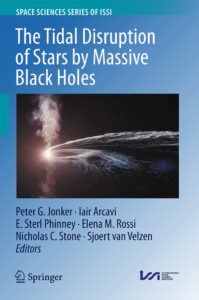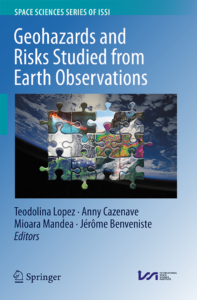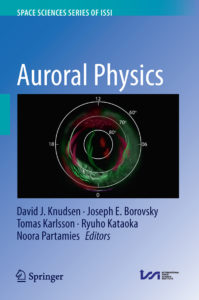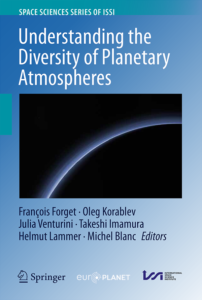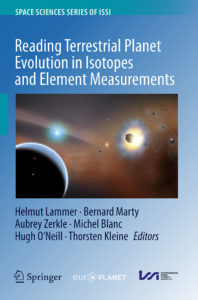Volume 88 in the Space Sciences Series of ISSI
“The Heliosphere in the Local Interstellar Medium”, the Proceedings of the first ISSI Workshop (6-10 November 1995), held in Bern, Switzerland and edited by R. von Steiger, R. Lallement, and M.A. Lee and published in 1996, was the first International Space Science Institute (ISSI) book (#1) in the Space Sciences Series. This book covers the knowledge gained in the subsequent 27 years that revolutionized our understanding of the interaction of the heliosphere with the very local interstellar medium (VLISM). Entirely new regions of space have been explored! The Voyagers both crossed the termination shock, passed through the heliosheath, crossed the heliopause, and entered the interstellar medium. New Horizons was launched with more modern instrumentation and explores low-latitude regions of the outer heliosphere. Energetic neutral atoms observed by IBEX and CASSINI allowed exploration of the heliosphere over the whole sky. The initial reconnaissance of the heliosphere and VLISM is complete with in situ measurements, observations of energetic neutral atoms (ENAs), neutral VLISM H and He, UV emissions, and interstellar dust.
This book is a collection reviews from experts in the many aspects of this field that describe the current state of knowledge of the heliosphere’s interaction with the interstellar medium, puzzles yet to be solved, and future plans to continue these studies.
This volume results from a Workshop held at the International Space Science Institute (ISSI) in Bern on 8–12 November, 2021.
This Volume is co-published as open access Topical Collection in Space Science Reviews.

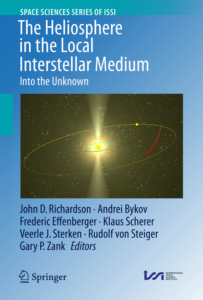
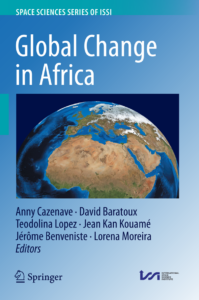 The main objective of this book is to provide an overview of the benefit of using Earth Observation data to monitor global environmental changes due to natural phenomena and anthropogenic forcing factors over the African continent, and highlight a number of applications of high societal relevance. The main topics presented in the book concern: water resources, floods and droughts, coastal zones changes and exploitation of mineral resources and its impact on the environment.
The main objective of this book is to provide an overview of the benefit of using Earth Observation data to monitor global environmental changes due to natural phenomena and anthropogenic forcing factors over the African continent, and highlight a number of applications of high societal relevance. The main topics presented in the book concern: water resources, floods and droughts, coastal zones changes and exploitation of mineral resources and its impact on the environment. 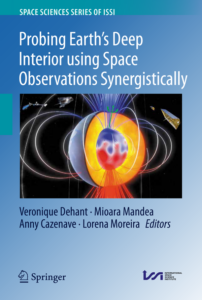 During the recent decades, space missions (e.g., CHAMP, GOCE, GRACE and Swarm) have been developed by space agencies in Europe and the USA to measure the Earth’s gravity and magnetic fields and their spatio-temporal variations. These successful missions have already provided a wealth of groundbreaking results about the permanent and time-variable gravity and magnetic fields of the Earth. However, more can be learned about the Earth’s structure by combining data of the gravity and magnetic fields, together with Earth’s rotation data routinely measured using space geodesy techniques, as well as with the most up-to-date modelling of the Earth’s internal structure. Use in synergy of these global observables and model data represents a unique way to further investigate the physics of the deep Earth’s interior. In addition to the well-known correlation between Earth’s rotation and magnetic field observed at interannual and decadal time scales, recent studies have reported unexpected correlation between spatio-temporal changes of the gravity field and magnetic field, also at interannual time scale. These changes may result from processes occurring in the liquid core and at the core-mantle boundary.
During the recent decades, space missions (e.g., CHAMP, GOCE, GRACE and Swarm) have been developed by space agencies in Europe and the USA to measure the Earth’s gravity and magnetic fields and their spatio-temporal variations. These successful missions have already provided a wealth of groundbreaking results about the permanent and time-variable gravity and magnetic fields of the Earth. However, more can be learned about the Earth’s structure by combining data of the gravity and magnetic fields, together with Earth’s rotation data routinely measured using space geodesy techniques, as well as with the most up-to-date modelling of the Earth’s internal structure. Use in synergy of these global observables and model data represents a unique way to further investigate the physics of the deep Earth’s interior. In addition to the well-known correlation between Earth’s rotation and magnetic field observed at interannual and decadal time scales, recent studies have reported unexpected correlation between spatio-temporal changes of the gravity field and magnetic field, also at interannual time scale. These changes may result from processes occurring in the liquid core and at the core-mantle boundary.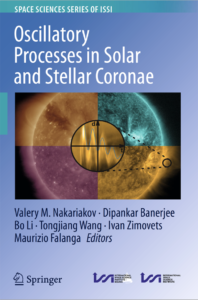 The volume presents a broad and in-depth overview of recent achievements and the current state of research in magnetohydrodynamic (MHD) oscillatory and wave phenomena in the coronae of the Sun and stars. Major progress in coronal wave studies has been achieved thanks to the combination of high-precision multi-wavelength observations with spaceborne and ground-based facilities, elaborated theory of the interaction of MHD waves with plasma non-uniformities, state-of-the-art numerical simulations, and novel data analysis techniques. It has allowed the research community to reach a new look at the role played by MHD wave processes in the enigmatic phenomena of coronal plasma heating and wind acceleration as well as powerful energy releases such as flares and coronal mass ejections. In addition, the waves are intensively used as natural probes in the remote diagnostics of the coronal plasma parameters and physical processes operating in solar and stellar coronae via the method of MHD seismology. Individual chapters cover recent cutting-edge results obtained on the analysis and theoretical modelling of several most intensively studied coronal MHD wave phenomena, namely, kink and sausage oscillations of coronal loops and other field-aligned plasma structures, plus running and standing slow magnetoacoustic waves. A dedicated chapter assesses the reliability of proposed theoretical mechanisms for heating of the coronal plasma by MHD waves. Another chapter summarizes the current state of our understanding of the physical mechanisms and observational properties of quasi-periodic pulsations in solar flares, considers their analogy with similar processes detected in stellar flares, and thus establishes solid ground for the further exploitation of the solar-stellar analogy. An important discussion of novel data analysis techniques designed recently for MHD seismology applications is presented in a devoted chapter. The direction of future advances in the designated research areas are discussed.
The volume presents a broad and in-depth overview of recent achievements and the current state of research in magnetohydrodynamic (MHD) oscillatory and wave phenomena in the coronae of the Sun and stars. Major progress in coronal wave studies has been achieved thanks to the combination of high-precision multi-wavelength observations with spaceborne and ground-based facilities, elaborated theory of the interaction of MHD waves with plasma non-uniformities, state-of-the-art numerical simulations, and novel data analysis techniques. It has allowed the research community to reach a new look at the role played by MHD wave processes in the enigmatic phenomena of coronal plasma heating and wind acceleration as well as powerful energy releases such as flares and coronal mass ejections. In addition, the waves are intensively used as natural probes in the remote diagnostics of the coronal plasma parameters and physical processes operating in solar and stellar coronae via the method of MHD seismology. Individual chapters cover recent cutting-edge results obtained on the analysis and theoretical modelling of several most intensively studied coronal MHD wave phenomena, namely, kink and sausage oscillations of coronal loops and other field-aligned plasma structures, plus running and standing slow magnetoacoustic waves. A dedicated chapter assesses the reliability of proposed theoretical mechanisms for heating of the coronal plasma by MHD waves. Another chapter summarizes the current state of our understanding of the physical mechanisms and observational properties of quasi-periodic pulsations in solar flares, considers their analogy with similar processes detected in stellar flares, and thus establishes solid ground for the further exploitation of the solar-stellar analogy. An important discussion of novel data analysis techniques designed recently for MHD seismology applications is presented in a devoted chapter. The direction of future advances in the designated research areas are discussed.